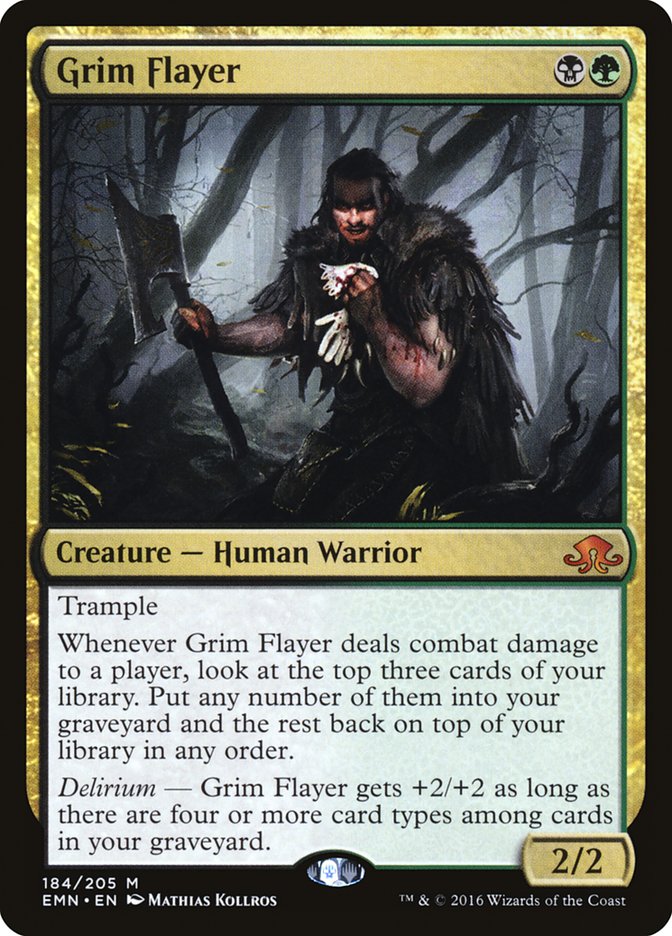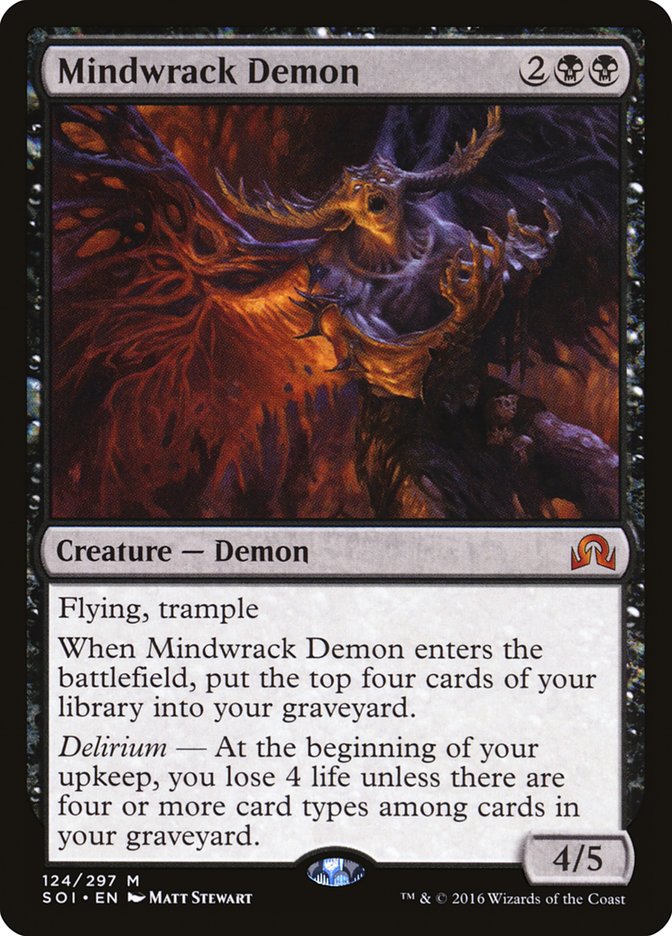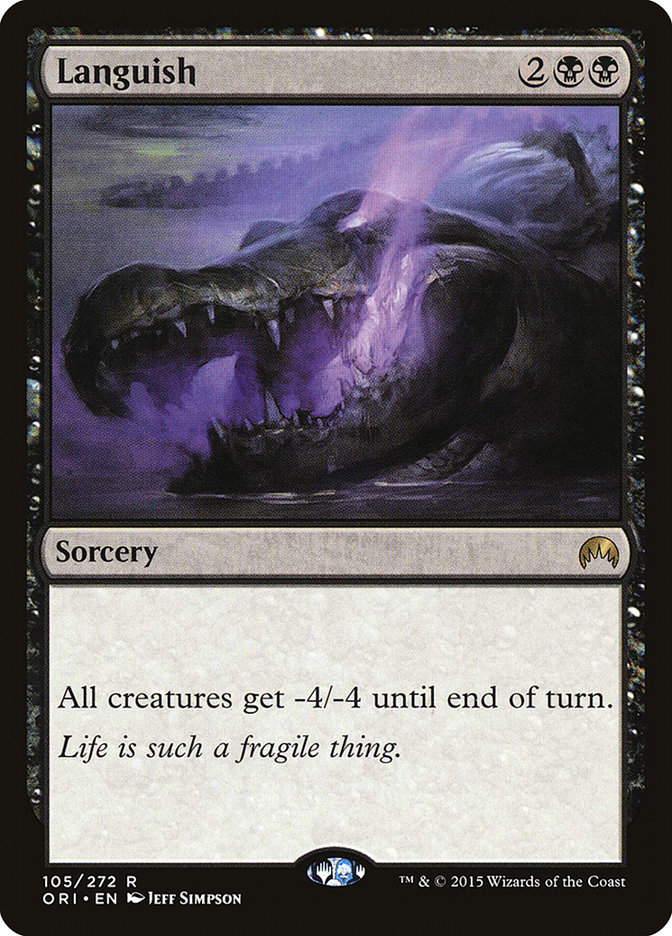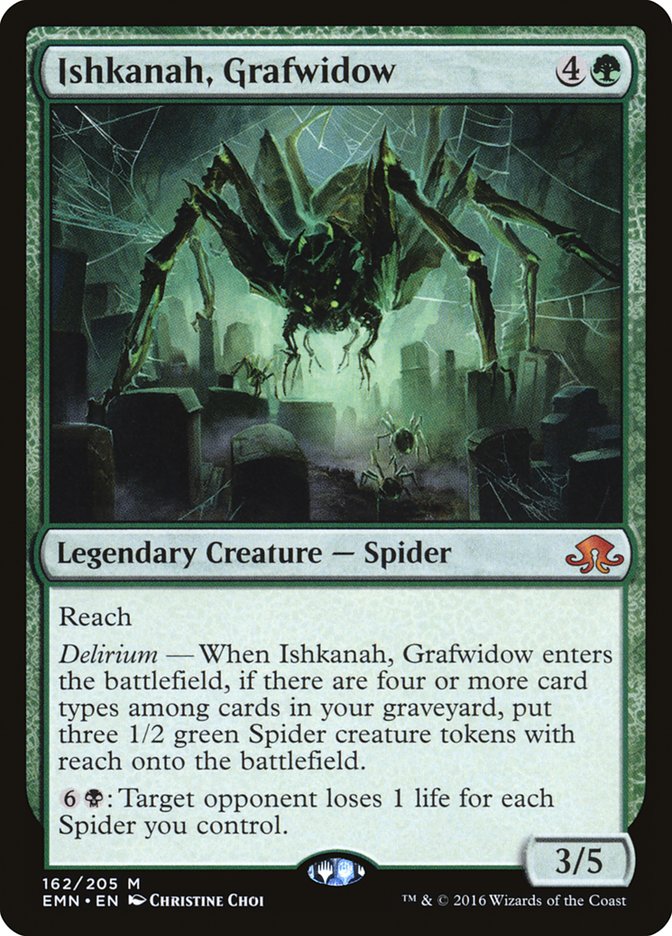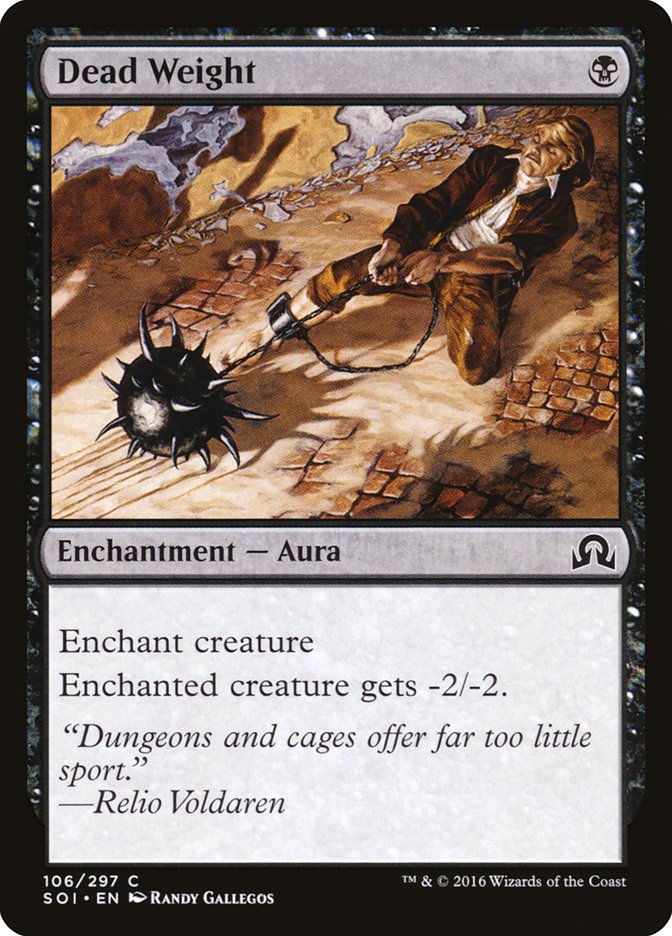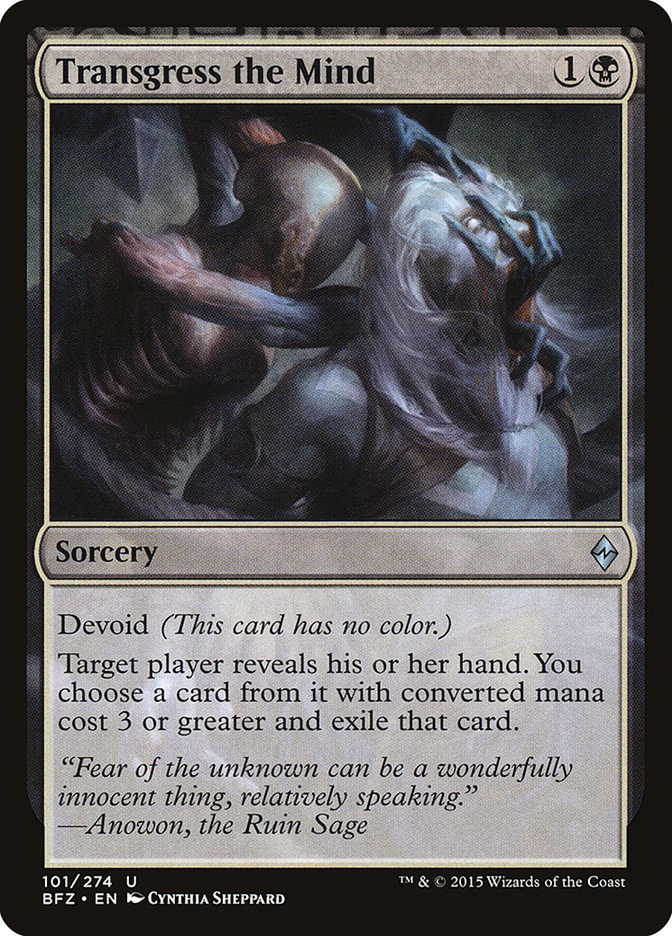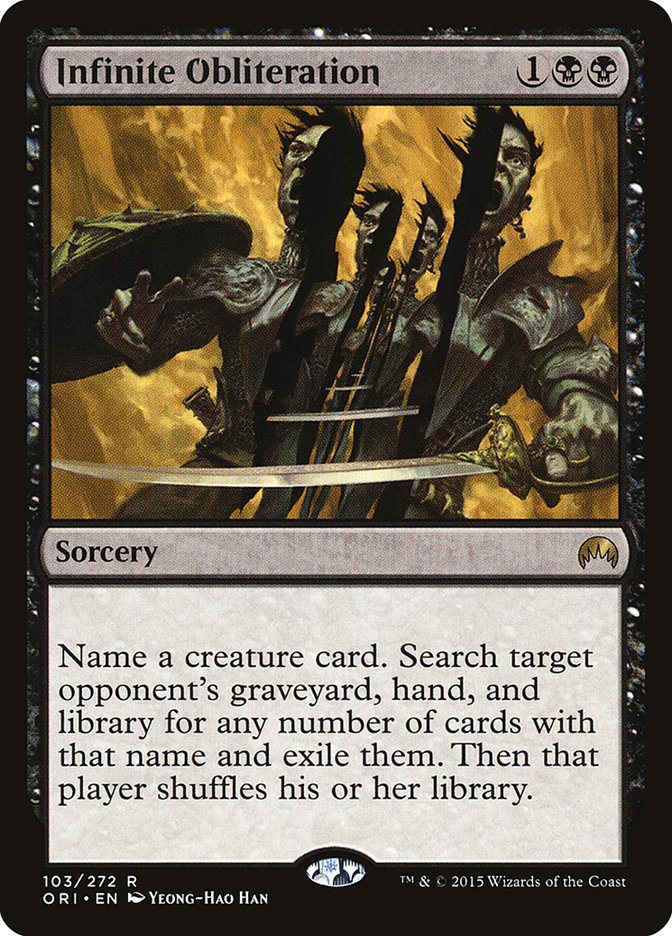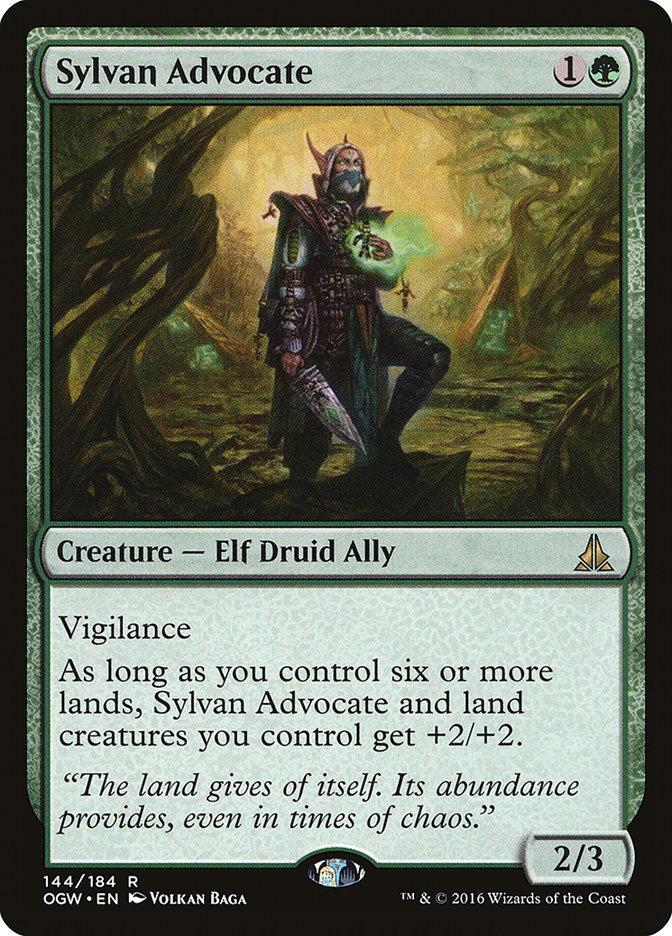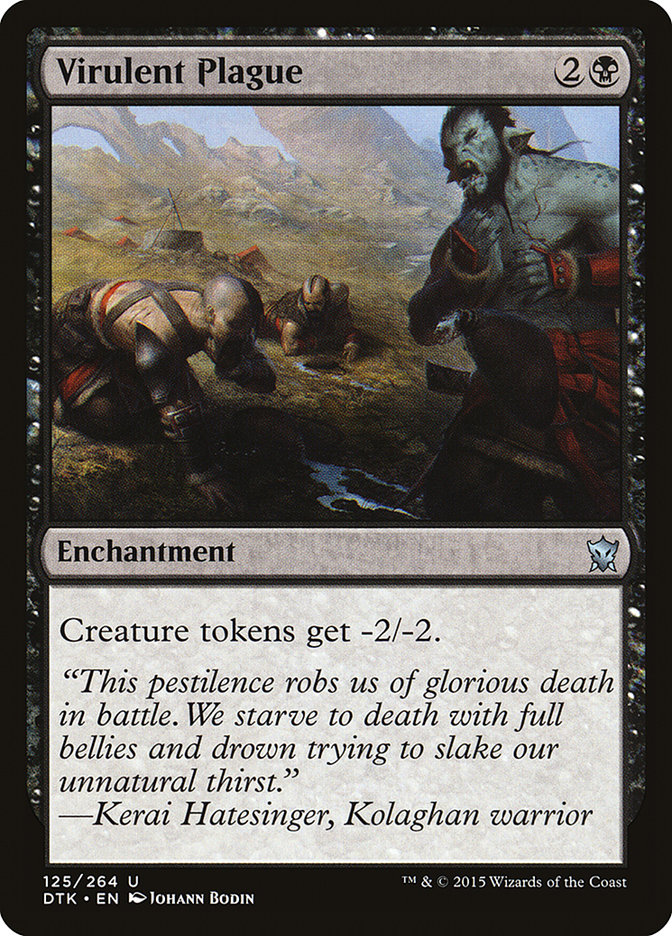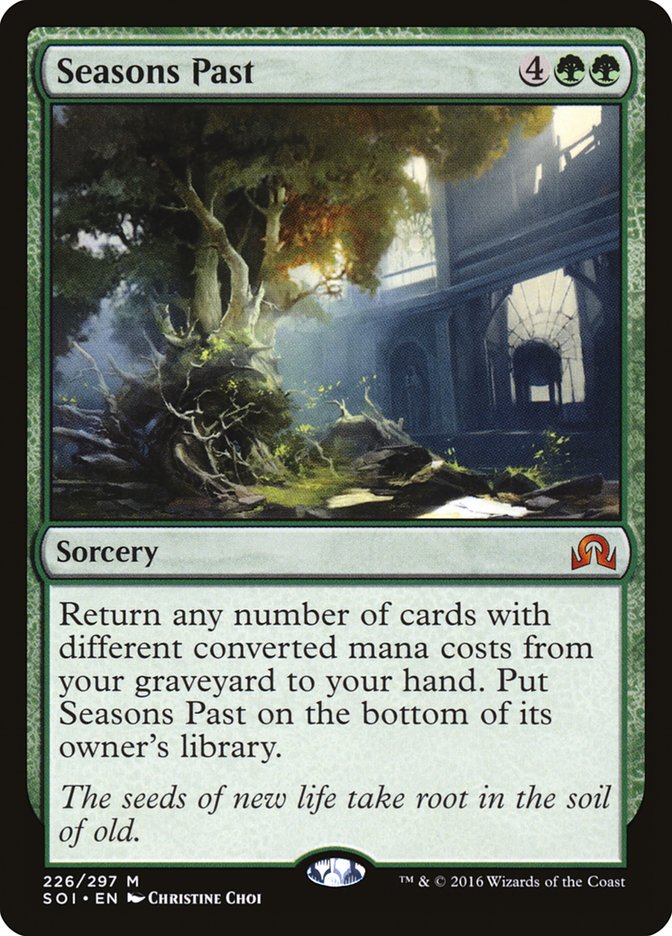This past weekend the Standard format was shaken up at #PTEMN by a plethora of new archetypes. Emrakul, the Promised End seemed to be everywhere and everyone seemed to have a different home for her. Team Face To Face came to play with a G/B Delirium build that we worked on from the first day of testing all the way through until the last hour we were able to submit a deck. Here is this list I played to an 8-2 record and 25th-place finish, the same deck Sam Pardee took all the way to the semifinals of #PTEMN.
Creatures (15)
- 1 Den Protector
- 2 Nissa, Vastwood Seer
- 2 Sylvan Advocate
- 3 Tireless Tracker
- 1 Emrakul, the Promised End
- 2 Ishkanah, Grafwidow
- 4 Grim Flayer
Planeswalkers (4)
Lands (24)
Spells (17)

I was really excited to take on the task of exploring G/B Delirium during testing. A lot of the new mythic rares seemed to slide right into this archetype, which usually is an indication that there is something to find if you find the right support. Grim Flayer stood out to me as a card I really wanted to try, a proactive two-mana threat that worked incredibly well alongside one of the seemingly more powerful cards in Eldritch Moon, Liliana, the Last Hope.
Grim Flayer reminded me a lot of Jace, Vryn’s Prodigy in that it cost two mana, gave the ability to sculpt your hand when played early, and became a bigger threat as the game progressed. In practice Grim Flayer worked very much like I anticipated and I was impressed from the start.
Mindwrack Demon was a card we tried a lot of, but ultimately felt like there was too much variance with the card unless we really wanted to go down the rabbit hole and work hard for delirium. A four-drop threat that is “risky” to cast in certain stages of the game wasn’t where we ultimately wanted to be. Besides all of the risk associated with Mindwrack Demon, there was also the fact it lined up extremely poorly against Reflector Mage. Without playing a huge variety of card types, we didn’t feel Mindwrack Demon was worth playing.
Instead of having packages of cards just to hit delirium, the philosophy of this deck was simply to let Grim Flayer achieve delirium on its own if it was able to connect in the early game or naturally achieve delirium by playing Magic: trade off creatures, cast removal spells, tick down a Liliana, and so on. By just playing Magic, you can hit delirium with this deck in most of the games, and when you are unable to achieve delirium early, the deck can still function like a normal midrange or control deck until you eventually do get there.
I went in to testing with a mindset that playing a bunch of “do nothing” cards like Terrarion and Vessel of Nascency just to enable delirium wasn’t the way to go because it was possible to do it without them. Standard can be a punishing format if you take turns off not interacting with the battlefield.
This was a huge mistake in retrospect and something we should have explored more of once we found out how good Emrakul, the Promised End actually was. I stand by the statement that those cards wouldn’t be great if their sole purpose was to achieve delirium, but casting a faster Emrakul, the Promised End is what this format is turning into, so I expect to see a lot of these enablers moving forward.
Playing Languish along with Grim Flayer was where I hesitated most. Initially, it just seemed like bad deckbuilding to put a pile of sweepers in a deck that had a lot of early threats that died to these sweepers.
It ends up looking odd, but Grim Flayer is one of your better cards where Languish is one of your worst. Against decks like G/R Ramp and G/W Tokens Grim Flayer is important, while Languish is oftentimes uncastable. Against decks like Bant Company and Humans, Languish is an extremely important part of games you win, while Grim Flayer is simply just a fine two-drop that doesn’t have much impact on the game. Also, Grim Flayer early usually demanded a Reflector Mage, which allowed us to cast Languish without killing our own threat in the process.
Early versions of this deck were just getting crushed in the late-game. Ishkanah, Grafwidow was an excellent card in our deck, but it wasn’t enough to be the big payoff. After playing a bunch with this deck, personally, I was kind of “off it” when Bant Company and G/W Tokens kept beating us in long games. Eventually Sam Pardee suggested we try Emrakul, the Promised End, even though our deck isn’t filled with various types to reduce her cost.
It makes a lot of sense to include Emrakul, the Promised End here. The effect is remarkably similar to Ugin, the Spirit Dragon, an eight-mana threat that usually closed out the game if you were able to get to that stage of the game. Older Abzan Control decks used to play a copy of Ugin, the Spirit Dragon for just this reason, and Emrakul, the Promised End was acting as that in this delirium deck; however, we have the ability to tutor for our Emrakul, the Promised End with Traverse the Ulvenwald, meaning Emrakul usually keeps her promise with this deck.
One copy of Emrakul, the Promised End was all it ended up taking to push the deck over the top. It’s funny how one single copy of a card in your deck can change everything. Our numbers on Traverse the Ulvenwald increased to four from three, as it was the best topdeck in the middling to late turns. Our deck became centered on controlling the game early and playing Ishkannah, Grafwidow to bridge us right into a devastating Emrakul, The Promised End.
For a few days straight we had several matches going of B/G Delirium against Bant Company, G/W Tokens, and B/W Control. After finding these matchups to all be somewhat favorable with the inclusion of Emrakul, the Promised End and a newly devised sideboard plan, we almost all locked in.
We spent countless time tweaking the removal package to a place we felt comfortable. The 61st card I would have played if there was room was a single copy of Dead Weight as an extra card type that was usually relevant and could often kill three-toughness creatures along with a Liliana, the Last Hope. Eventually we designated a copy to the sideboard and settled in on our list.
These were our sideboard plans leading into the tournament and during the tournament against the new decks in the field.
Bant Company
In:
Out:
Humans
In:
Out:
G/W Tokens
In:
Out:
B/W Control
In:
Out:
G/R Ramp
In:
Out:
Temur Emerge
In:
Out:
I’d want to keep in my removal against Andrew Brown’s version of Temur Emerge that is more creature-heavy and cut the Grim Flayers, leaving one copy of Languish in my deck for Dark Petition.
Mirror Match
In:
Out:
On the play it’s acceptable to leave in Grim Flayer over Sylvan Advocate.
The Weaknesses
There are some issues moving forward with this G/B Delirium list. Just like every other team at the Pro Tour, we prepared for a field full of Bant Company, G/W Tokens, and B/W Angels. With Emrakul, the Promised End exploding onto the scene, the metagame is about to shift entirely. With this shift, many of the cards in G/B Delirium will have to change to combat the evolving metagame.
Grim Flayer was most impressive against G/W Tokens. Grim Flayer allowed us to pressure planeswalkers with trample while also giving us a cheap proactive threat against other decks like G/R Ramp, allowing us to steal wins with a beatdown plan backed up by some cheap discard. I’m not sure I’d want Grim Flayer in my deck moving forward. Against various Emrakul, the Promised End decks; Bant Company; and various Emerge decks Grim Flayer just doesn’t cut it.
Languish was our best card against Bant Company, and I still expect Bant Company to be popular, but Languish is a real liability against most other Emrakul, the Promised End matchups. For this reason I would reduce the number of Languish maindeck.
Transgress the Mind is one of our best cards against this new Eldrazi-filled metagame, so I’d likely want to include two or three copies maindeck, sideboarding into more disruption, or maybe even go deeper on hand disruption maindeck by including a maindeck Dark Petition package, including Infinite Obliteration.
I’d also like to try Vessel of Nascency in our deck in a low number because it may be important to play a faster Emrakul, the Promised End. In testing, most of the expected field wasn’t playing Emrakul, the Promised End, so it didn’t feel like we had to be in a hurry to cast Emrakul, the Promised End first. With everyone finding a new home for Emrakul, the Promised End, I would expect to often be in a scenario where you and your opponent are racing to cast Emrakul, the Promised End, so having an extra type would be ideal. Dead Weight isn’t reliable enough to always go to the graveyard, and Vessel of Nascency can fill up the graveyard quickly to turn on Traverse the Ulvenwald and Ishkanah, Grafwidow early.
Here is where I’d start tomorrow, but I could definitely see myself changing card choices back pretty quickly, as I was personally a big fan of Grim Flayer where others on my team were not.
Creatures (13)
- 1 Den Protector
- 2 Nissa, Vastwood Seer
- 4 Sylvan Advocate
- 3 Tireless Tracker
- 1 Emrakul, the Promised End
- 2 Ishkanah, Grafwidow
Planeswalkers (4)
Lands (24)
Spells (19)

Moving forward I think it’s extremely important to have a disruption package for Emerge decks, Ramp decks, and various other Emrakul, the Promised End decks. These decks are all vulnerable to cards like Infinite Obliteration, Transgress the Mind, and Pick the Brain. I’d want a heavy package of these cards moving forward, along with Tireless Tracker for pressure while also keeping a steady flow of card advantage. Sylvan Advocate is much better both with Languish and against Bant Company than Grim Flayer, and without as much G/W Tokens, I’d want to move towards Sylvan Advocate initially.
Tireless Tracker is second to only Emrakul, the Promised End for most important card in the mirror match, and before going to sleep the night before the Pro Tour, the fourth copy was the sixteenth card in my sideboard.
I no longer find much of a need for a card like Conclave Naturalists, an effect we had specifically in our decks for G/W Tokens and potential Pyomancer’s Goggles decks. G/W Tokens had a tendency to play cards like Quarantine Field and Evolutionary Leap, both great cards in the matchup, so it was nice to have a creature to Traverse the Ulvenwald for to clean up these problems.
Virulent Plague was another card specifically for the G/W Tokens matchup, but it was a card you didn’t always want to cast anyway because it worked poorly with Ishkanah, Grafwidow and Liliana, the Last Hope. Some of my teammates didn’t even bother playing it when they expected G/W Tokens, so you can definitely remove that from the sideboard moving forward.
If you expect a lot of G/W Tokens in your metagame, it’s perfectly reasonable to continue playing both Virulent Plague and Conclave Naturalists in your sideboard.
Seasons Past was a highly controversial inclusion in our sideboard. Many people on our team hated it, and others simply loved it. I think most of us, if not all of us played it, but it only seemed to shine to me in G/B Delirium mirrors. The card seemed simply too slow against other decks. I could see still including it if G/B Delirium is a really popular deck because it works so well along with Dark Petition in long grindy games where both sides have exiled Emrakul, the Promised End.
Taking on the World!
Overall #PTEMN was a huge success for both me and my team. Most of us achieved the goals we set out for, and seven of us are now going to the World Championships in September! I set out this season knowing it was going to be more difficult for me to attend a lot of tournaments, and I sort of set my mind on trying to achieve Platinum but not necessarily thinking I’d have a shot at Worlds without some really solid Pro Tour finishes.
I exceeded my goal of Platinum and was lucky enough to receive the last slot at the Magic World Championships, and I couldn’t be more excited. Qualifying for the most prestigious individual Magic event has reinvigorated a fire in me and I want nothing more than to be the World Champion. I am going to work my butt off these next few weeks to make sure I have the best shot at becoming the next World Champion.


